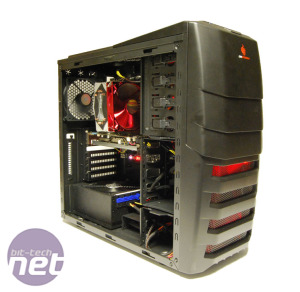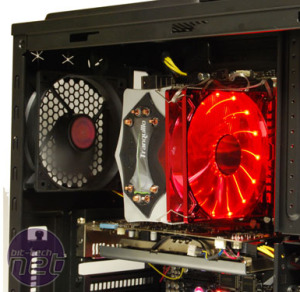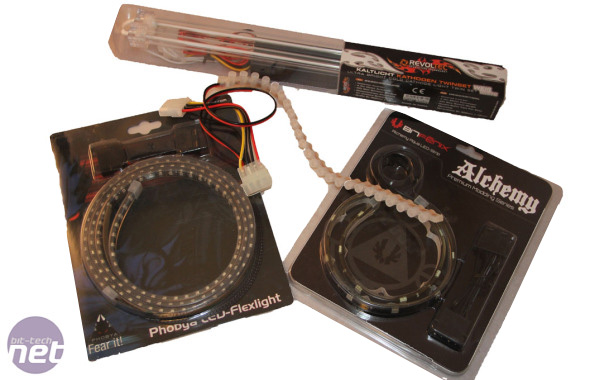
Illuminate your PC - Part 1
This is the first part of a three-part guide on how to illuminate your PC. In the first part, we'll be covering the basics then moving on to intermediate and advanced techniques. We'll be taking a look at lighting to your PC using cathodes and LEDs and also talking about more advanced techniques such as using acrylic and making illuminated panels for your PC.There are plenty of ways to add illumination to your PC, and if you haven’t tinkered with cathodes, LEDs or light strips yet, then you’re definitely missing out on a fun and rewarding way of making your PC unique and great to look at.
However, it’s not just a case of reaching for a bunch of cathodes and sticking them inside your PC. Following a few simple rules will mean your PC looks professional rather than giving the Las Vegas strip a run for its money. In essence, it’s more important to actually illuminate your hardware than to simply make your PC bright enough to be able to see the bones in your hand.
Decide on a colour.
The choice of colour is as important with PC lighting as it is with clothes or bedroom walls. Get it right and it looks great; get it wrong and your PC can often end looking much worse than before you started. Unlike clothes and bedrooms, though, it’s usually best to use just one colour and definitely avoid any lighting that offers rainbow effects or something similar.
Strictly speaking, white isn’t a colour, however white cathodes and LEDs are all the rage at the moment and are great for highlighting acrylic details. They’re also the best choice if you’re looking to build a super-clean system. Thankfully, they’re available in practically any guise, including LEDs, Cathodes and light strips meaning they’re as versatile as lighting of any other colour.
It’s also worth considering any details on your case. If it has red details, such as logos or switches, then opting for green or blue lighting is a bad idea. In general, the lighting should match these details, except of course for white lighting, which is pretty much universal. If your PC is water-cooled, the tubing or coolant colour should decide the colours of your lighting. The only exceptions to the rules may involve the use of UV lighting, but we’ll get to that later.
Which lights do I need?
This question may seem obvious, but there are many factors that you should consider before clicking the buy now button. The inside of modern PC cases can be very different – some are modularised, others have mid-sections, while others have huge gaping voids. For a uniform dousing of light for a large area, the humble cathode is a good choice, but LED-type lights offer more intensity, produce less heat and are more flexible.
LED light strips are very popular at the moment and are much more flexible. They're available in a variety of colours, including white and UV, with pre-made sets available from the likes of Phobya and BitFenix in its Alchemy range of modding gear, while lighting company Phenoptix offers customisable strips, which, if you're up for a bit of soldering, you can chop to specific lengths.

MSI MPG Velox 100R Chassis Review
October 14 2021 | 15:04











Want to comment? Please log in.